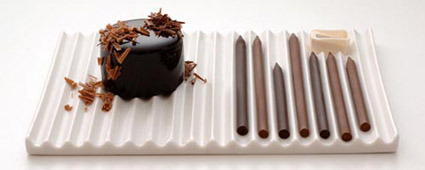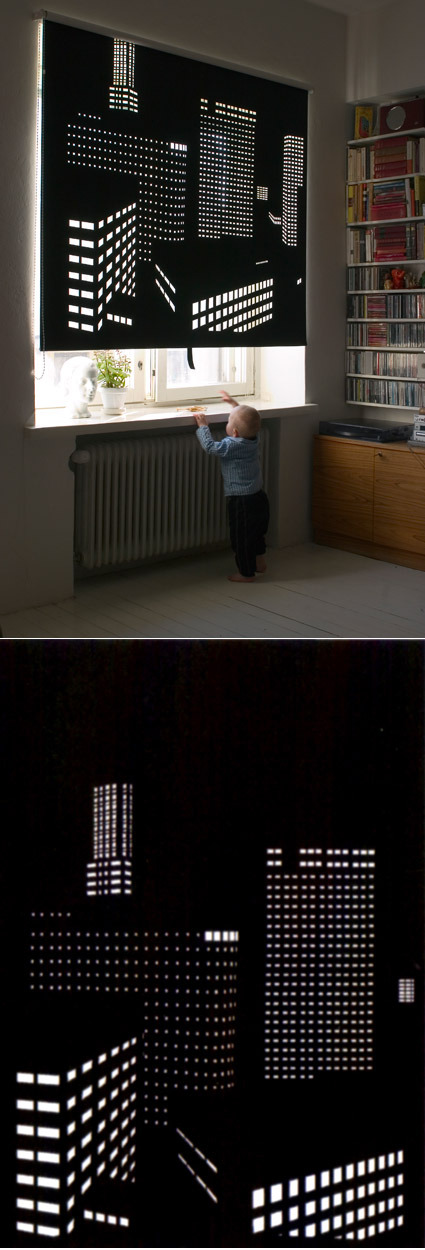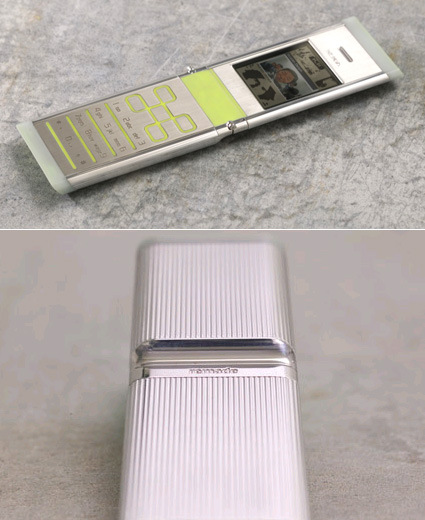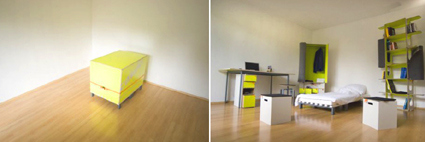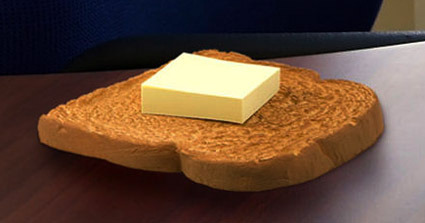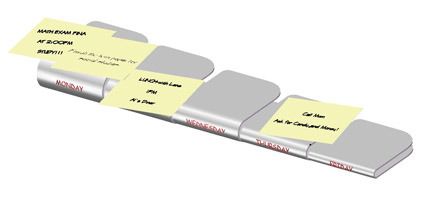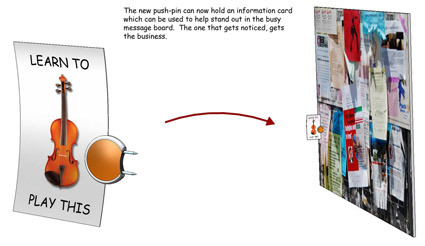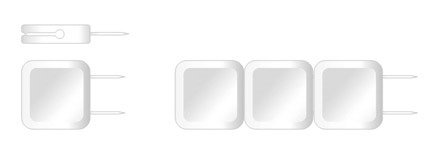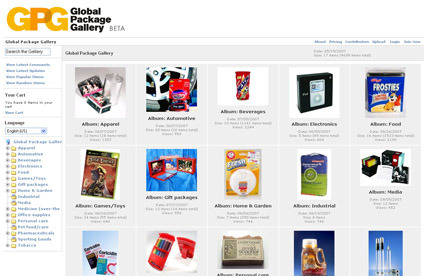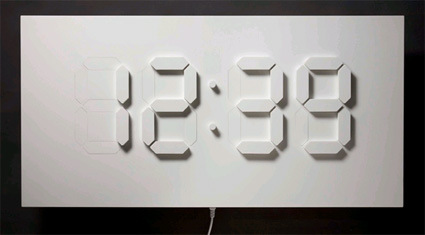
I am always rather intrigued when digital or virtual experiences are brought back into the physical realm of ‘things’ (‘thing‘ being, ‘stuff’, feelable, touchable stuff). From the popularity of ‘steampunk’ computers we see an almost desperate claw at turning our increasingly digital lives back into something more tangible, more crafty.
The D/A Clock is yet another example – converting a whole table-sized display of time in the classic LCD segments. What’s also interesting though is the purposefully slow transition from one digit to another. When I first saw the picture I thought the blocks would simply jerk up and down as it changes; the video however shows a much more subtle transition:
This object plays on the common LED-display digital clock with physical segments that slowly fade in and out of a white surface. The D/A Clock introduces new characteristics to the digital mediation of time: a physical dimension and intermediate states – the time between 0 and 1.
I like that the designer Alvin Aronson noticed and chose to play-up this subtle difference. In the digital world of ’0′ and ’1′s, there are no intermediate states: it’s either one or the other. And when the clock is borne onto this full-sized, physical display, it drops its ‘digital’ properties and re-adopts the analog properties that this world operates in. Interesting thought.


